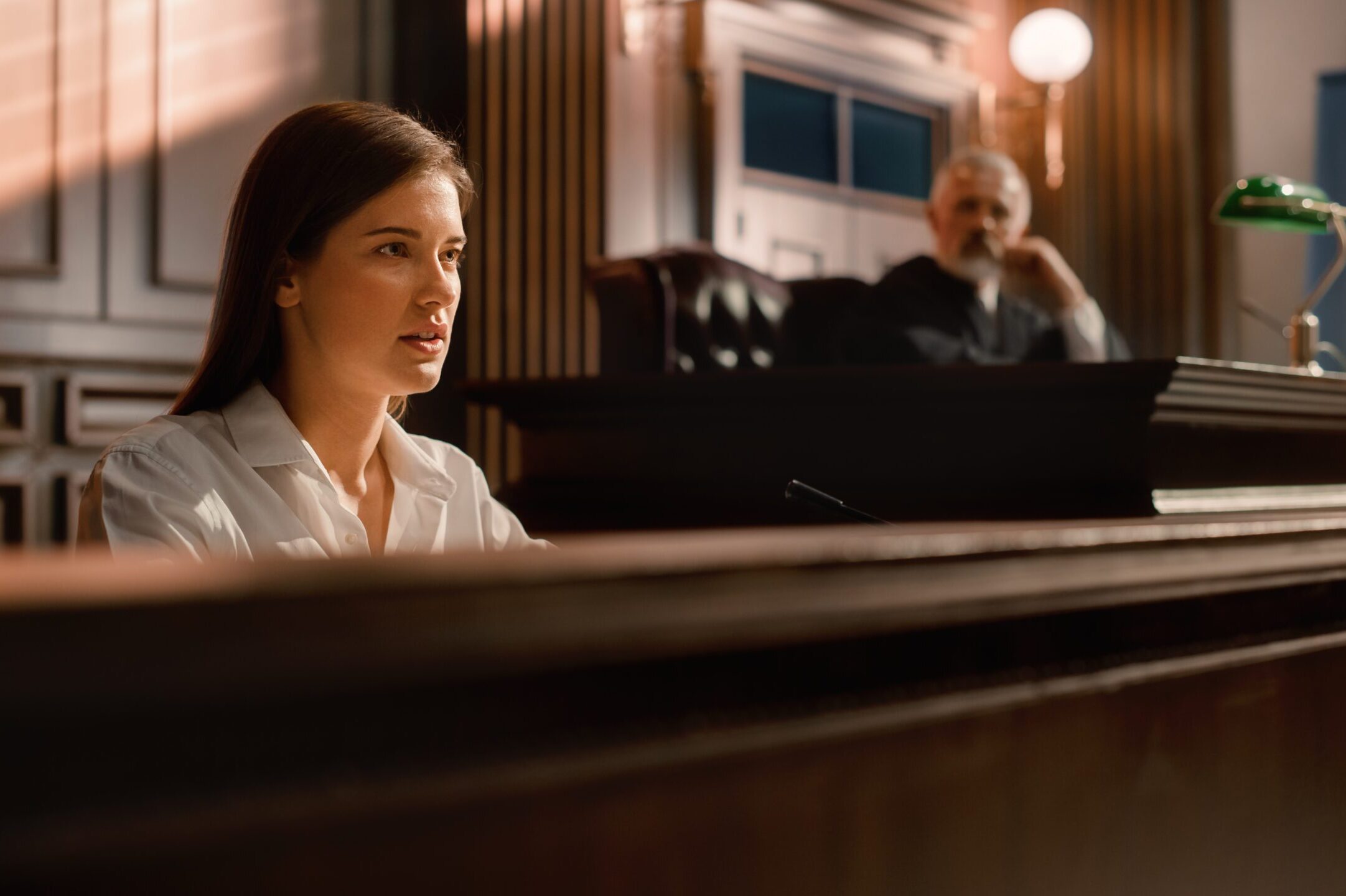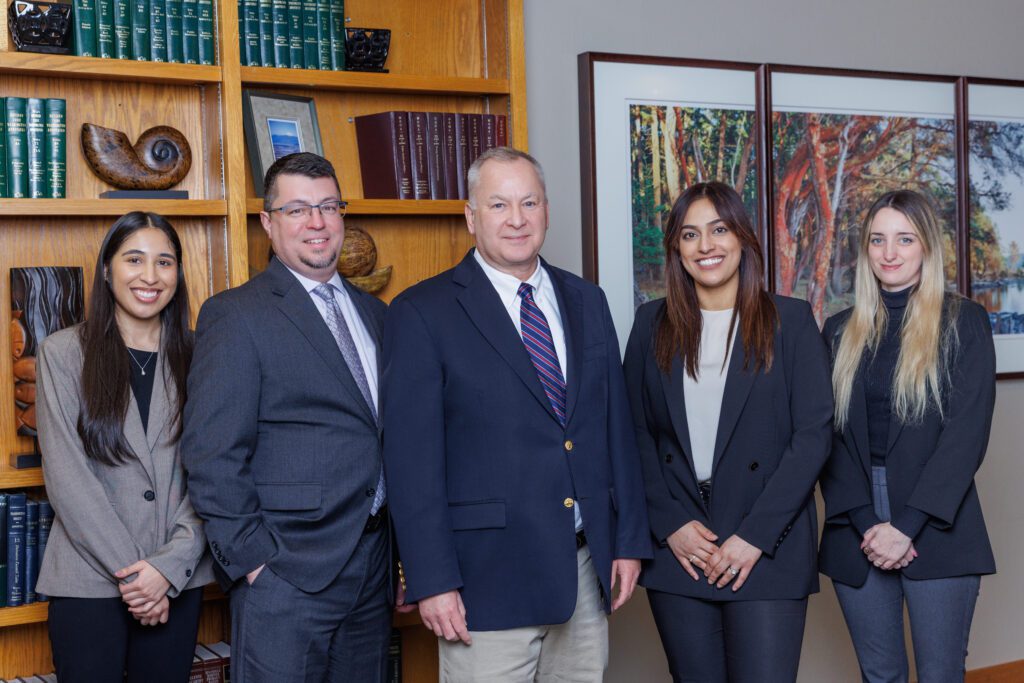Attorney Adrian M. Madrone has teamed up with Law Professor Julie A. Helling’s acclaimed Internet Podcast Series Justice On Trial. In this episode, Adrian discusses the core of many criminal trial — the direct and cross examination of witnesses. To listen to the complete podcast, where Julie also discusses how juries decide on a verdict, visit iTunes.
A full transcript of Adrian’s ‘Know Your Rights’ segment is provided below for your convenience. Listen to the Podcast Here
What is Direct and Cross Examination?
On previous episodes of this podcast, we have discussed some of the steps involved in taking a case to trial. These have included preliminary legal arguments, jury selection, and opening statements. Once a jury is empaneled and the parties have made their opening statements, the process moves to the presentation of evidence typically done by calling witnesses. Today we will be discussing these parts of the trial—the direct and cross-examination.
Prosecution and Defense
To start, remember that the two sides in a trial are the plaintiff or prosecution—the side the brought the case; and the defense—the side defending against the criminal charges or civil claims. In the trial, the plaintiff or prosecution gets to put on its witnesses and evidence first. Once the plaintiff has presented its entire case, the defense then gets to put on its case. This back-and-forth process of calling witnesses and presenting evidence really becomes the bulk of the trial.
Calling Witnesses
When an attorney calls a witness to the stand and asks them questions, this is called “direct examination.” After direct examination, the opposing party gets to question the witness, which is called “cross-examination.” Although both direct and cross-examination involve asking a witness questions, each type of questioning is done very differently.
Direct Examination
So let’s start with direct examination. When an attorney calls a witness, they typically know what the witness is going to say, and the testimony will generally support their side’s overall position. For example, in a criminal trial for an assault charge, the prosecution would call the assault victim, police officers who responded to the incident, and other eyewitnesses (if there were any). These would all be witnesses who would support the prosecution’s assault charge against the defendant.
What Happens During Direct Examination?
When the attorney calls their witness and does direct examination, the questions are typically going to be very open-ended, giving the witness plenty of time to tell what they saw, did, heard, etc. Direct examination questions will often open with things like: who, what, where, when, why, and how. With these open-ended questions, the witness gets the space to answer questions thoroughly and completely. The idea with direct examination is that the witness is the star; the attorney is simply there to facilitate the presentation of whatever the witness has to say.
Cross Examination
Once the attorney has finished direct examination of their witness, the other side gets a chance to ask that witness questions in cross-examination. An attorney doing cross-examination will be questioning a witness who is there to support the other side. Because of that, the attorney’s job on cross-examination is to point out flaws, holes, inconsistencies and weaknesses in the witness’s testimony. This makes cross-examination more confrontational and requires more focused witness control than is called for in direct examination.
What Happens During Cross Examination?
Questions on cross-examination are allowed to be leading questions, and experienced attorneys will ONLY ask leading questions on cross. Leading questions are ones that include the answer within the question itself. For example, if the questioning had to do with what color a stop-light was at a particular time, on direct examination the question might be simply, “What color was the stop light when the accident took place?” On cross-examination (using a leading question), it might be “When the accident took place, the stop-light was red, isn’t that correct?” This leading question allows very few options for the witness other than yes or no.
Why Use Leading Questions?
In cross-examination using leading questions, the attorney will actually be doing the bulk of the talking and then having the witness confirm or deny what has been stated. Unlike direct examination, the attorney is largely occupying the space during cross, and working hard to pin the witness into very specific answers. Cross-examinations are typically very tightly scripted by the attorney asking the questions, and the attorney is normally only asking questions that they already know the answer to.
What is a Hostile Witness?
So again, the process of direct and cross-examination involves open-ended questions to the witness on direct, and tight, leading questions on cross. The only time this may be different is when a party is dealing with a “hostile witness.” The term “hostile witness” does not necessarily mean that the witness is angry or upset. Instead, it means a witness that an attorney is calling on direct, but that does not support the party’s overall position.
Example of a Hostile Witness
For example, in a criminal prosecution, the prosecuting attorney may need to call friends or family members of the defendant. This might happen where the defendant confessed to a friend that he committed a crime. The friend may not like the fact that the defendant is being prosecuted, and may not agree with the prosecution of the case at all. But the prosecutor may still have to call that person as their witness. If the witness makes clear that they don’t intend to make direct examination easy or that they don’t plan to cooperate, the attorney can ask to treat the witness as hostile.
If the judge grants permission, the attorney then may use leading questions to get the examination done. So the prosecutor might ask, “what did your friend, the defendant, tell you about the incident?” If the witness won’t give a straight answer and the judge allows it, the attorney can switch to leading questions like, “On the night of the incident, your friend came to your house, correct? And when he was there he discussed the incident with you, correct? And he admitted to you that he committed this crime, isn’t that so?” These leading questions can be used to keep a hostile witness more under control than might normally be allowed on direct.
As you can see, this back-and-forth of direct and cross-examination makes up the bulk of the presentation of a case at trial. Knowing how this works is important to understanding what the trial process involves. This is attorney Adrian Madrone, and this ‘Know Your Rights’ segment has been brought to you by the Lustick, Kaiman & Madrone law firm, a full-service criminal defense firm in Bellingham, Washington.


